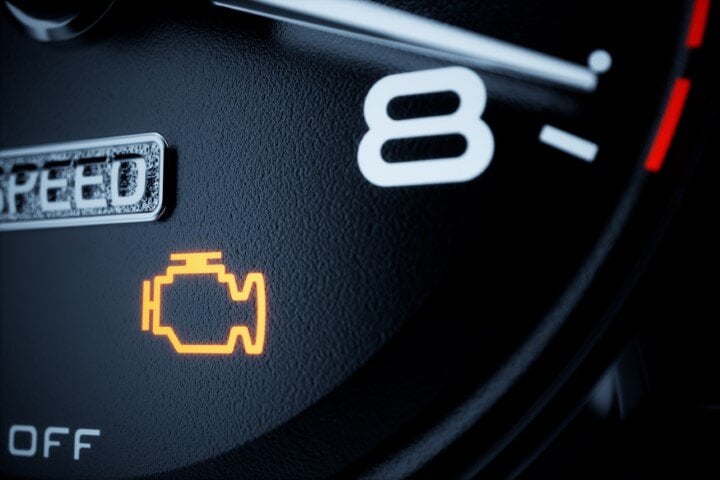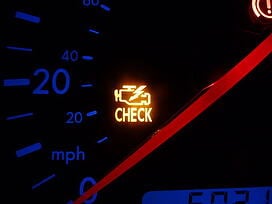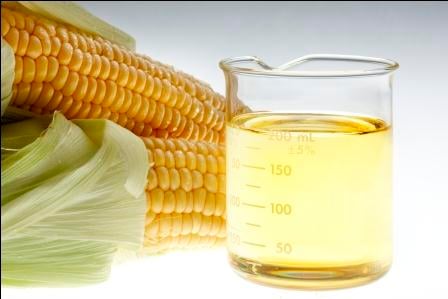How to Tell if Ethanol is Destroying my Vehicle
Here's a fact: Most gasoline that you're pumping into your vehicle these days contains some sort of ethanol concentration, typically 10 to 15...

The check engine light is a commonly misunderstood piece of equipment on a car. The light comes on and the driver freaks out, thinking the vehicle is about to blow up. If you understand what it's supposed to do, you also can anticipate what kinds of things unexpectedly cause it to come on and what you can do about it.
 The check engine light is a signal that the onboard diagnostics system (or OBD II) has detected a malfunction in the vehicle’s emissions, ignition, fuel, or exhaust systems. It could be caused by something as simple as a loose gas cap or a faulty oxygen sensor or spark plug or something as severe as a faulty catalytic converter. Because many of the problems identified are tied to the emissions system, they aren't as straightforward and don't necessarily put a car out of commission.
The check engine light is a signal that the onboard diagnostics system (or OBD II) has detected a malfunction in the vehicle’s emissions, ignition, fuel, or exhaust systems. It could be caused by something as simple as a loose gas cap or a faulty oxygen sensor or spark plug or something as severe as a faulty catalytic converter. Because many of the problems identified are tied to the emissions system, they aren't as straightforward and don't necessarily put a car out of commission.
In order to understand how it is tied to emissions, you must understand the main purpose of the onboard computer. Although it monitors many engine functions, its main purpose is to deliver a 14.7 air/fuel ratio to the catalytic converter. This is not an ideal ratio for performance but it is the air/fuel ratio where the catalytic converter works best. Anything that interferes with this will result in an illuminated check engine light. When the check engine light comes on, the computer will set codes in its memory that will help a technician diagnose the problem.
The two most common reasons for a check engine light to illuminate are a loose fuel cap or a problem with an oxygen sensor.
The oxygen sensor detects the level of oxygen in the post-combustion emissions and is looking for values within a certain range which tells the computer that everything is working properly - the engine is burning the fuel in the right way and the emissions are in the proper balance. Oxygen sensors detect air/fuel ratios in the exhaust and generate voltage signals based on what they detect. These sensors are actually voltage generators working on a scale from 0 to 1,000 millivolts. A reading above 500 millivolts indicates the air/fuel ratio is rich, which means more fuel and less air. A reading under 500 millivolts indicates a lean condition, meaning more air and less fuel.
The oxygen sensor sends these voltage signals to the onboard computer, which can adjust the amount of fuel it supplies based on what the sensor is telling it. The computer's aim, here, is to keep the air/fuel ratio at an optimal level for the best emissions from the vehicle. So, in order to keep the check engine light from coming on, the computer will see the voltage signal from the oxygen sensor and either add or subtract fuel to keep the voltage reading close to 500 millivolts which is where a 14.7 to 1 air/fuel ratio happens. If the computer is unable to correct the ratio, the check engine light will come on and the appropriate codes will be set in the computer.
When the oxygen sensor detects something amiss, based on what it "sees" in the emissions, it can tell the computer to adjust certain operational things (like timing) to see if it can correct the problem. If the problem isn't correct, the check engine light comes on, which is the computer's way of telling you "I can't fix this by myself". You take it to a mechanic, they plug a code reader into the car's computer, and the computer tells the machine what things it's seeing. This gives the mechanic some strong clues on what they need to look for to correct any particular problem.
If the fuel cap is loose and is the reason for the check engine light illuminating, you simply need to tighten the cap, and in a short time while driving the light will go out.
Believe it or not, your fuel can be a major trigger for conditions that lead to the triggering of your check engine light, in several ways.
First, let's talk about ethanol in gasoline, which can be a trigger for the check engine light. This can happen if the computer is expecting to see one thing and it keeps seeing another; this will cause the computer to flip on the warning light in response. Non-flex fuel vehicles are not designed to run on ethanol concentrations higher than 15%. Flex fuel vehicles can use any concentration of ethanol up to 85% which is known as E85. Ethanol has less energy than gasoline; therefore, more fuel is required to achieve the same performance. The fuel injectors in non-flex vehicles are different than the ones in a flex fuel vehicle. Flex fuel injectors in conjunction with the computer allow for a greater flow of fuel. If higher concentrations of ethanol are present in the fuel tank of your non-flex vehicle, performance and drivability issues will result and in turn, the check engine light will illuminate.
Put it another way, non-flex fuel vehicles (i.e. probably your car), they're designed to run on ethanol percentages in the fuel of 15% or less. They're not designed to run on, say, 85% ethanol fuel (E85) - and by this, we mean the timing and injection in the engine are set to function properly on lower concentrations of ethanol. Why does this matter if your car isn't set up this way? If you put E85 in a vehicle where the computer is expecting to see 15% ethanol or less, the level of oxygen in the emission that the sensor reads is going to be dramatically different. This confuses the computer, which is not expecting to see levels of oxygen as high as that. The computer thinks it's not supplying enough fuel and starts injecting too much fuel for what the engine really needs, while also playing with the timing by changing how often and when the spark plug fires. In most normal cars (i.e. non flex-fuel), it wouldn't even run in this kind of situation.
Beyond simple ethanol percentage, gasoline that lacks the proper octane level your vehicle was designed for can result in a check engine coming on. The computer system monitors a knock sensor in the engine block which detects the pinging or rattling sound caused by pre-ignition, a result of insufficient octane. The computer will then retard the timing until the noise stops. If it cannot stop the pinging, it will illuminate the check engine light and set diagnostic codes in the computer’s memory.
The third area of concern is unscrupulous service station owners who might substitute methanol for ethanol. Methanol alcohol is cheaper than ethanol or gasoline, and if methanol is added to their gasoline supply tank to pick up additional dollars, it can have a negative effect on your computer’s ability to regulate the air/fuel ratio. Methanol has more oxygen in it resulting in higher concentrations of oxygen in the exhaust stream. The computer will see this lean air/fuel ratio from the oxygen sensor reading and will add additional fuel to maintain the 14.7 to 1 air/fuel ratio we talked about earlier. This will ruin your good fuel mileage and if the computer is unable to correct this by adding additional fuel to correct the reading, the check engine light would illuminate alerting you to a problem.
So, whether it's too much ethanol in the fuel or methanol that's not supposed to be there, in both of these highly-plausible scenarios, the computer sees more oxygen in the exhaust than it thinks it should. But it's not so far out of whack that the engine can't run. It's just not going to run nearly as well on 21% ethanol or 5% ethanol + 7% methanol. So the computer starts playing with the timing and the fuel injection and you end up using more fuel than you should (lower mileage). And if it can't correct the problem that way, it will turn your check engine light on.
On a final note, there are many more reasons why a check engine light comes on. If the check engine light comes on while you are driving but you do not notice a change in the way the engine is running, it is most likely an emission system issue. You should get this checked as soon as you can but it is not something that is going to shut you down. If the check engine light comes on and you notice a negative change in the engine operation, this is something that needs to be checked right away. If an engine miss occurs, continuous operation of the vehicle can result in a damaged or destroyed catalytic converter, a very expensive proposition.
Here's a fact: Most gasoline that you're pumping into your vehicle these days contains some sort of ethanol concentration, typically 10 to 15...

2011 was the year that people really started to realize how bad ethanol was for their vehicles and small engines. Repair shops around the country...
Today most gas sold at the pump has ethanol in it. Gasoline called E10 has up to 10 percent ethanol and E15 gas called E15 has up to 15 percent...